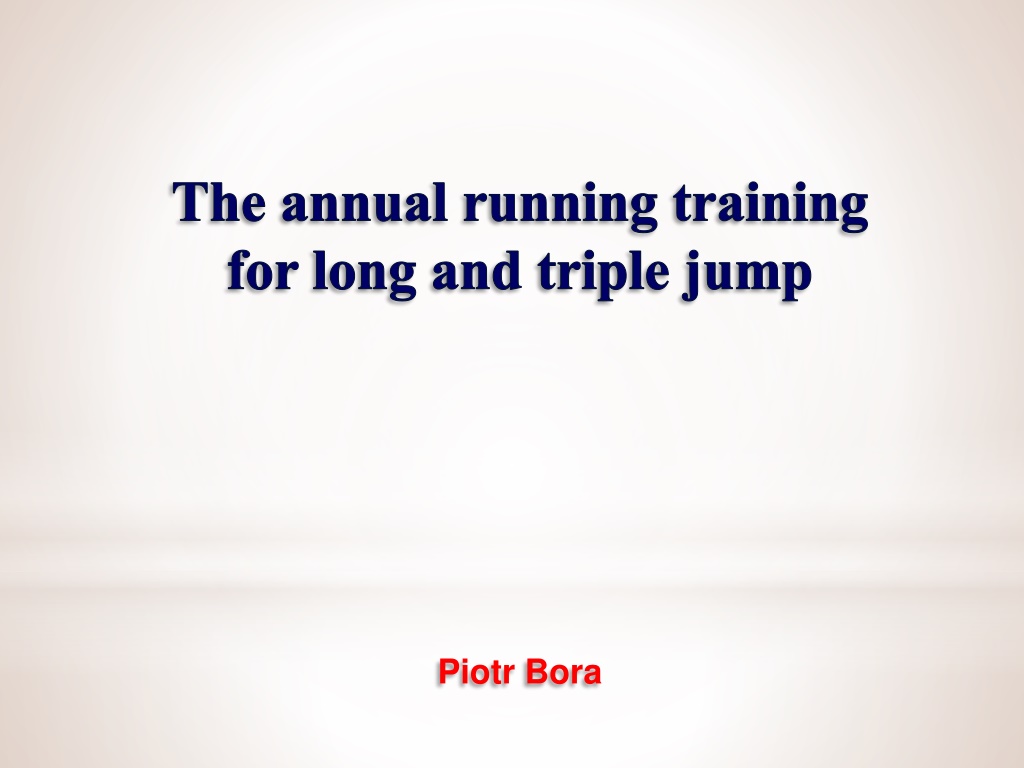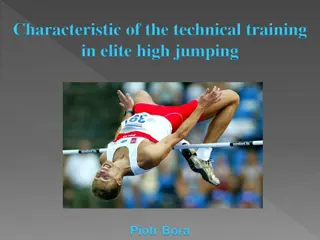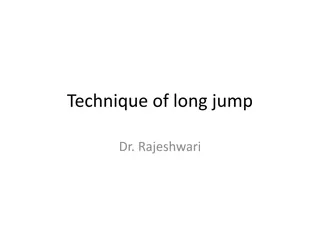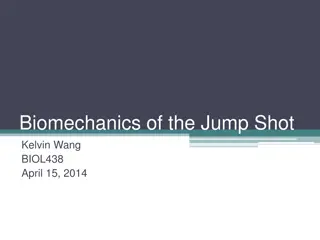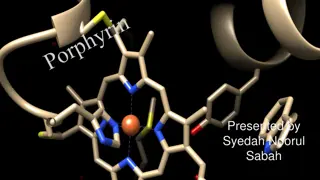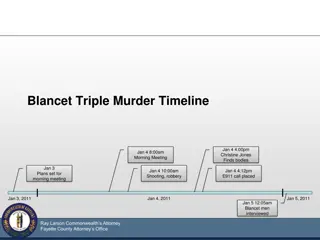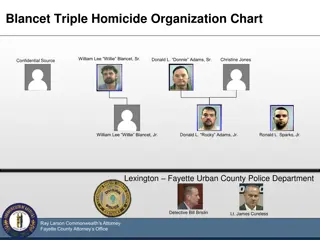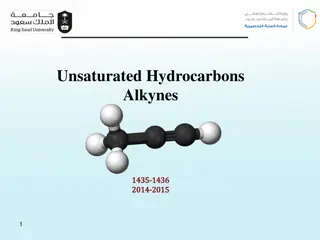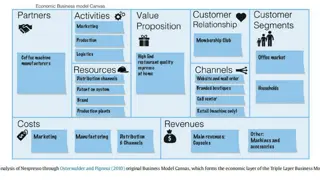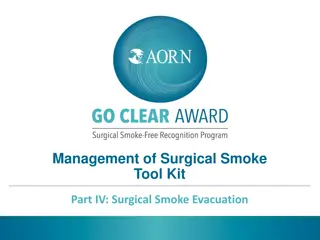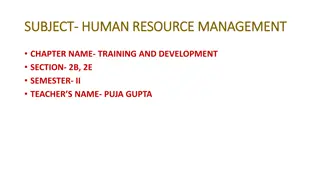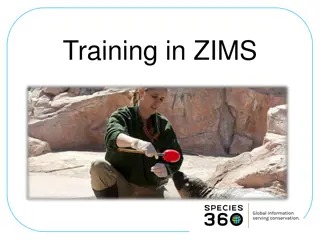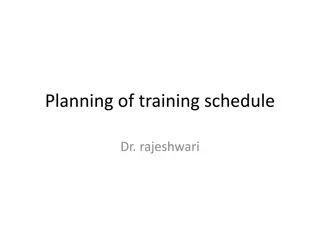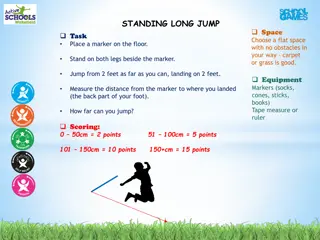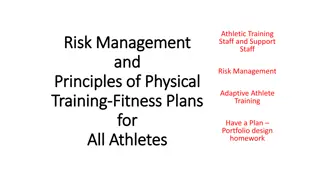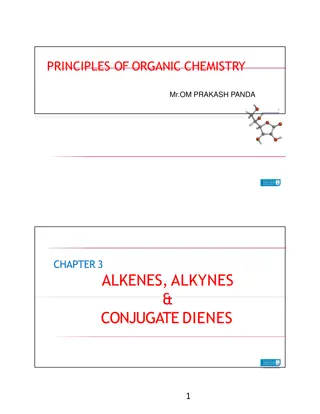Comprehensive Guide to Long and Triple Jump Training Macrocycle
Comprehensive guide covering the annual training macrocycle structure for long and triple jump athletes. Discusses the preparatory period, mesocycles, and training sessions. Includes details on speed, endurance, and technical preparation to prepare athletes for competitions.
Download Presentation

Please find below an Image/Link to download the presentation.
The content on the website is provided AS IS for your information and personal use only. It may not be sold, licensed, or shared on other websites without obtaining consent from the author. Download presentation by click this link. If you encounter any issues during the download, it is possible that the publisher has removed the file from their server.
E N D
Presentation Transcript
The annual running training for long and triple jump Piotr Bora
Running Training Speed Endurance
The annual macrocycle is divided into three periods: preparatory competition transition
Tab. 1 The structure of the annual training for long and triple Competition (indoor) Preparatory Competition (outdoor) Preparatory Transition Period Noof weeks 12 6 12 16 6
Preparatory Period This is the most important and also most difficult part in the all-year training cycle The main task is to suitably prepare an athlete for a long and intense competition period
The typical preparatory period consists of five mesocycles: introductory basic special preparation technical preparation pre-competiton
Tab.2 The training macrocycle structure for long and triple jump preparatory period Preparatory Period Pre- Special Preparation Technical Preparation Mesocycles Introductory Basic competition Number of 2 3 4 3 2 weeks
Introductory Mesocyckle One running training session only (general endurance) during a week The development of endurance takes place outdoors such as in the stadium, grass or forest
Introductory Mesocyckle The main parts of the workouts consist of: jogging stretching special running drills There are no speed drills in this mesocycle
Introductory Mesocyckle Monday flexibility + jumping Tuesday strength I Wednesday flexibility + el. of long/triple jump technique Thursday --------- Friday - strength II Saturday - general endurence Sunday - -------------
Introductory Mesocyckle 1. Jogging 2 km 2. Stretching 15 min 3. Special running drills: A Skips 5x30m B Skips 5x30m C Skips 5x30m 4. Jogging 2 km 5. Stretching 20 min
Basic Mesocyckle Two endurance running training sessions per week The development of endurance consists of two parts (general endurance and speed endurance) It should take place outdoors such as in the stadium, grass or forest
Basic Mesocyckle The main part of the workouts consists of: jogging stretching special running drills (skips) runs (150 m-200 m) There are no speed drills in this mesocycle
Basic Mesocyckle Monday jumping + el. of long/triple jump technique Tuesday strength I Wednesday general endurence Thursday - strength II Friday - flexibility + jumping Saturday - speed endurence Sunday - -------------
Basic Mesocyckle 1. Jogging 3 km 2. Stretching 15 min 3. Special running drills A Skips 5x30 m Run 150m B Skips 5x30m Run 150m C Skips 5x30m Run 150m 4. Jogging 2km 5. Stretching 15min
Basic Mesocyckle 1. Warm up 2. Speed Endurance > recovery 6 min 3x200m, 2x150m 3. Cool-down
Special Preparation Mesocyckle Two running training sessions: 1x endurance and 1x speed per microcycle The development of endurance consists of one training session - speed endurance. It should take place at the stadium on grass or on the track The main part of the workouts includes runs: 120-150 m
Special Preparation Mesocyckle Speed training occurs once a week and there are some flexibility drills before speed training also The typical workouts consist of: accelerations ins-and-outs runs
Special Preparation Mesocyckle Monday long/triple jump technique Tuesday strength I Wednesday flexibility + speed Thursday - strength II Friday - el. of long/triple jump technique + jumping Saturday - speed endurence Sunday - -------------
Special Preparation Mesocyckle 1. Warm-up 2. Flexibility hurdles drills (walking every three steps) >6x6, 76.2-84cm height 3. Speed >recovery 5-6 min accelerations 3-4x30m ins-and-outs runs 3-4x60m (15m slow +15 m fast + 15m slow + 15m fast) 4. Cool-down
Special Preparation Mesocyckle 1. Warm up 2. Speed endurance >recovery 6 min 3x150m, 2x120m 3. Cool-down
Technical Preparation Mesocyckle There are two running (speed) training sessions The development of speed training should take place on the track There are also some flexibility drills before speed training The typical workouts include: speed runs 40-60 m full approach for the long or triple jump
Technical Preparation Mesocyckle The running distances to develop speed don t exceed 60m and are performed relaxed with a gradual increased intensity and without timing There is no endurance training in this mesocycle
Technical Preparation Mesocyckle Monday strength I Tuesday long/triple jump technique Wednesday flexibility + speed Thursday - strength II Friday - long/triple jump technique Saturday - flexibility + speed Sunday - -------------
Technical Preparation Mesocyckle 1. Warm-up 2. Flexibility hurdles drills (walking every three steps) 6x6, 76.2-84 cm height 3. Speed >recovery 6- 8 min 4-6 x 60 m 4. Cool-down
Technical Preparation Mesocyckle 1. Warm-up 2. Flexibility hurdles drills (walking every one step) 6x6, 76.2-84cm height 3. Speed >recovery 8 min 3-4x40m full approach and take-off 2-3x (long jump) full approach and first take-off 2-3x (triple jump) 4. Cool-down
Pre-competion Mesocyckle The running training workouts are changed with only one speed session The main part of the workouts include: 40 m runs full approach for long and triple jump There are no endurance drills in this mesocycle
Pre-Competition Mesocyckle Monday strength I Tuesday long/triple jump technique Wednesday flexibility + speed Thursday - strength II Friday - ---------- Saturday - competition Sunday - -------------
Pre-Competition Mesocyckle 1. Warm-up 2. Flexibility hurdles drills (walking every one step) 6x6, 76.2-84cm height 3. Speed >recovery 8 min 3-4x40m full approach and take-off 2-3x (long jump) full approach and first take-off 2-3x (triple jump) 4. Cool-down
Competion Period The most important aim of the Competition Period is to create such conditions that the athlete can achieve their best results The training process should be very specialised and include preparation for the next competitions The length of breaks between it depends on the physical and mental preparation and a calendar of events
Tab. 3 The training macrocycle structure for long and triple jump - competition period Competition Period Mesocycles Competition I DCP Competition II No of weeks 5 6 5
Competion Mesocyckle The running training consist of one speed session The main part of the workouts include: 40 m runs full approach for long or triple jump There are no endurance drills in this mesocycle
Competion Mesocyckle Monday strength I Tuesday long/triple jump technique Wednesday flexibility + speed Thursday - strength II Friday - ---------- Saturday - competition Sunday - -------------
Competion Mesocyckle 1. Warm-up 2. Flexibility hurdles drills (walking every one step) 6x6, 76.2-84cm height 3. Speed >recovery 8min 2-3x40m full approach and take-off 2-3x (long jump) full approach and first take-off 2-3x (triple jump) 4. Cool-down
Tab. 4 The training structure (DCP) for long and triple jump Direct Competition Preparation Period Accumulation Intensification Transformation Mesocycles No of weeks 2 2 2
Direct Competition Preparation Accumulation Monday long/triple jump technique Tuesday strength I Wednesday flexibility + speed Thursday - strength II Friday - el. of long/triple jump technique + jumping Saturday - flexibility + speed Sunday - -------------
Direct Competition Preparation Accumulation 1. Warm-up 2. Flexibility hurdles drills (walking every one step) >6x6, 76.2-84 cm height 3. Speed >recovery 6-8 min accelerations 2-3 x 30m ins-and-outs runs 3-4 x 60m (15m slow +15 m fast + 15m slow + 15m fast) 4. Cool-down
Direct Competition Preparation Accumulation 1. Warm up 2. Flexibility hurdles drills (walking every three steps) >6x6, 76.2-84 cm height 3. Speed >recovery 6-8 min accelerations 2-3 x 30m 6x40 m 4. Cool-down
Direct Competition Preparation Intensification Monday strength I Tuesday long/triple jump technique Wednesday flexibility + speed Thursday - strength II Friday - long/triple jump technique Saturday - flexibility + speed Sunday - -------------
Direct Competition Preparation Intensification 1. Warm-up 2. Flexibility hurdles drills (walking every three steps) 6x6, 76.2-84 cm height 3. Speed >recovery 6- 8 min 4-6 x 60 m 4. Cool-down
Direct Competition Preparation Intensification 1. Warm-up 2. Flexibility hurdles drills (walking every one step) 6x6, 76.2-84cm height 3. Speed >recovery 8 min 3-4x40m full approach and take-off 2-3x (long jump) full approach and first take-off 2-3x (triple jump) 4. Cool-down
Direct Competition Preparation Transformation Monday strength I Tuesday long/triple jump technique Wednesday flexibility + speed Thursday - strength II Friday - ---------- Saturday - competition Sunday - -------------
Direct Competition Preparation Transformation 1. Warm-up 2. Flexibility hurdles drills (walking every one step) 6x6, 76.2-84cm height 3. Speed >recovery 8 min 2-3 x 40m full approach and take-off 2-3x (long jump) full approach and first take-off 2-3x (triple jump) 4. Cool-down
Transition Period The Transition Period is a consequence of the two previous periods of training This time is often treated lightly by many athletes and coaches and this is a big mistake. Athletes tend to rest in a passive (this does not apply in cases of treatment for injury) The period is not indicated for passive relaxation due to the need to start the next training period with a higher sport level
Tab. 5 The training macrocycle structure for long and triple jump - transition period Transition Period Active Rest I Active Rest II Mesocycles 3 3 No of weeks
Transition Mesocyckle There should be one running session (general endurance) only and the development of this takes place on grass in the stadium or outside in the forest The main part of the workout consists of: jogging special running drills It should be noted that are no speed drills in this period
Active Rest I Mesocyckle Monday flexibility + sport games Tuesday --------------------- Wednesday swimming + bilogical recovery Thursday -------------------- Friday - general endurance Saturday - -------------------- Sunday - -------------
Active Rest I Mesocyckle 1. Jogging 2-3 km 2. Stretching 20 min 3. Jogging 2 km 4. Stretching 10 min
Active Rest II Mesocyckle Monday flexibility + general strength Tuesday --------------------- Wednesday flexibility + sport games Thursday -------------------- Friday - general endurance Saturday - -------------------- Sunday - -------------
Active Rest II Mesocyckle 1. Jogging 2 km 2. Stretching 15 min 3. Special running drills: A Skips 3x30m A Skips 3x30m A Skips 3x30m 4. Jogging 2 km 5. Stretching 20 min
